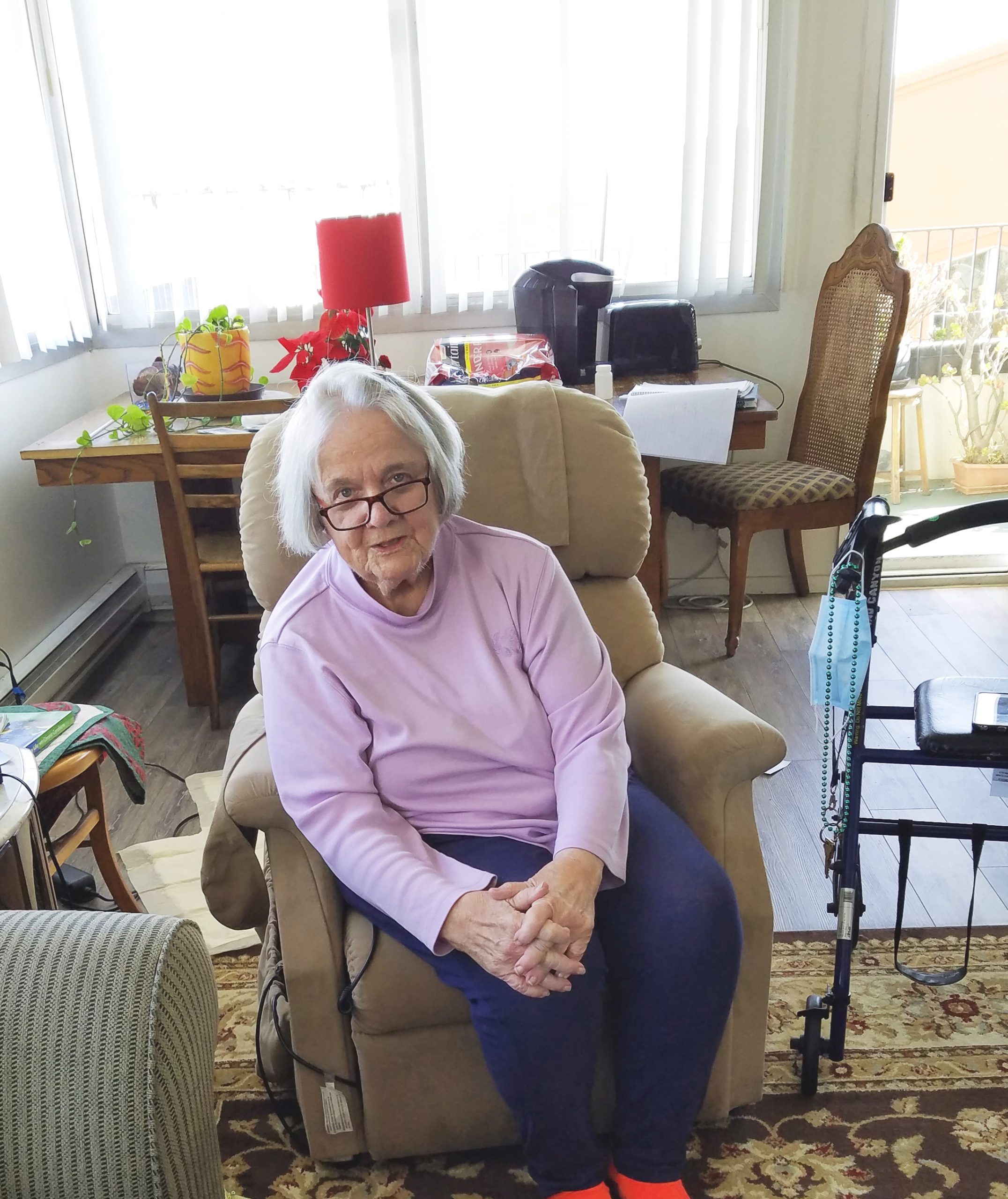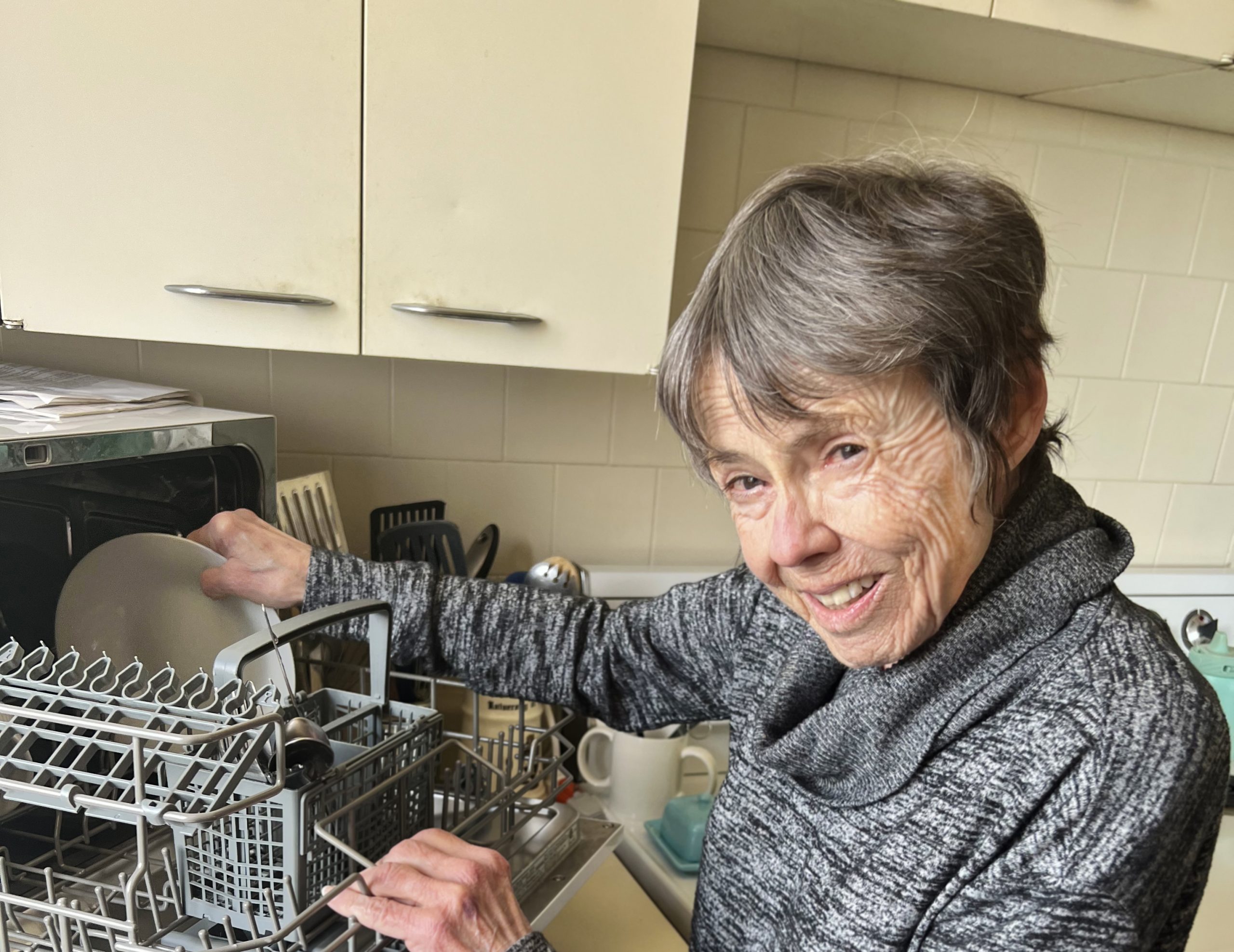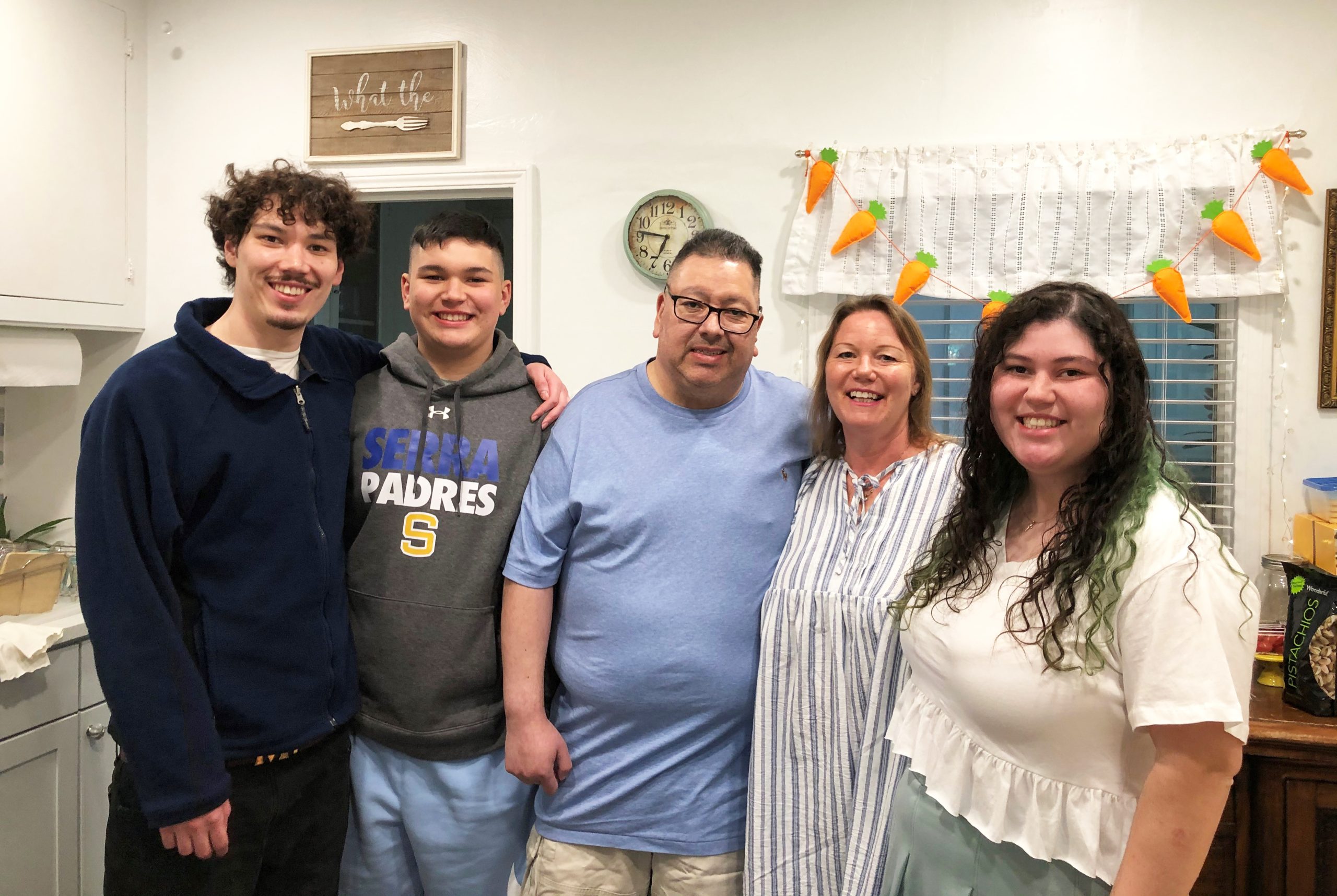Tending to aging seniors in their homes a necessary and noble but undervalued occupation – rewarding but challenging, emotionally and physically
By Judy Goddess and Mary Hunt
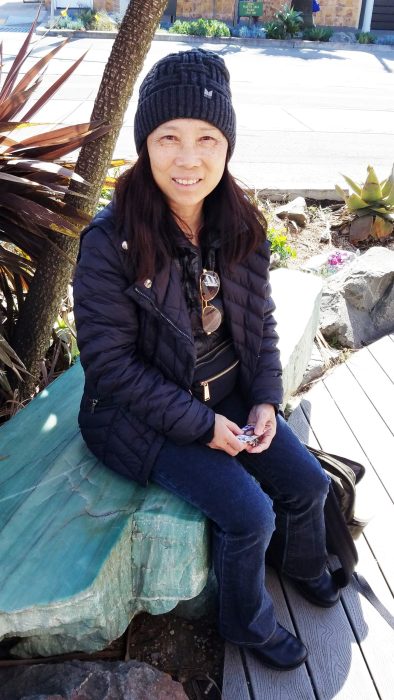
Debbie Gulli always enjoyed older people – her grandma, her in-laws. So, when slow business forced her to close her gift shop after 12 years, she began taking classes to qualify for a nursing assistant license.
She already had a degree in health sciences with a minor in gerontology from San Francisco State University. But little of that training would sufficiently prepare her for the daily chores of caregiving.
“Physically, of course, but also emotionally and psychologically. Figuring what the client wants. Thirty percent of the job is interpersonal,” she said. “Particularly since the pandemic there are a lot of depressed people.
“A lot of clients went downhill during the pandemic. They gave up. They want to die.”
Anna Kivalu, 46, is a registered home health aide and certified nursing assistant who has had special training for lifting patients. But that’s one task she refuses to do anymore, because domestic help is not covered by OSHA for workers compensation claims.
“Lifting MS and ALS patients is very difficult as they are dead weight when being moved,” said Kivalu, whose clients have included stroke patients, those with dementia, multiple sclerosis, Parkinson’s and other progressive neurological diseases.
Sometimes Kivalu has more trouble with family members, particularly of dementia patients. “They don’t understand what’s going on, so I explain a lot,” she said. “They get upset at their family member for asking the same thing every couple of minutes and they don’t come visit much. Clients usually felt alone and alienated when family members don’t come by.”
Lourdes Dobarganes, 49, had been working “many hours” as a domestic aide after a divorce left her as the sole support for her four children. But she lost all of her clients by the end of the first pandemic lockdown, and has since been spending more time in social justice activities.
“There are some people who are working as slaves in this country,” she said. “If they complain about low wages or non existent wages, their employers threaten to take away their visas.
Despite the drawbacks, Kivalu, Gulli and Dobarganes said they find the work satisfying and rewarding. “Caregiving is always different and engaging,” said Gulli, who worked for Aviva In-Home Care. “I’m always learning something, from the client, other caregivers and Aviva staff.
Seeing other worlds
Gulli read the news to a 102-year-old blind woman, arranged appointments for clients, drove them to doctor visits, shopped for them and bathed and dressed them. She even helped them hire 24-hour caregivers when needed. She even accompanied one client on a visit to a Texas cemetery where her family was buried.
Kivalu enjoyed seeing into worlds she had never experienced – the struggles of a Holocaust survivor escaping Hungary or the escapades of a wealthy 101-year-old and her 79-year-old boyfriend.
Her current client is Virginia Giazza, a 101-year-old who shares a home with her 82-year-old daughter, Rosanne Sagasty, in San Mateo. Kivalu works five nights a week, from 8 p.m. to 7:30 a.m. to help Giazza, who has bowel and stomach issues. “I was fine with getting care,” said Giazza. “I knew Rosanne needed help. She has her own health problems.”
But before bedtime, the three of them enjoy watching TV together, from favorites like “Law and Order” and “To Tell the Truth” with Tyler Perry to home and garden and cooking shows.
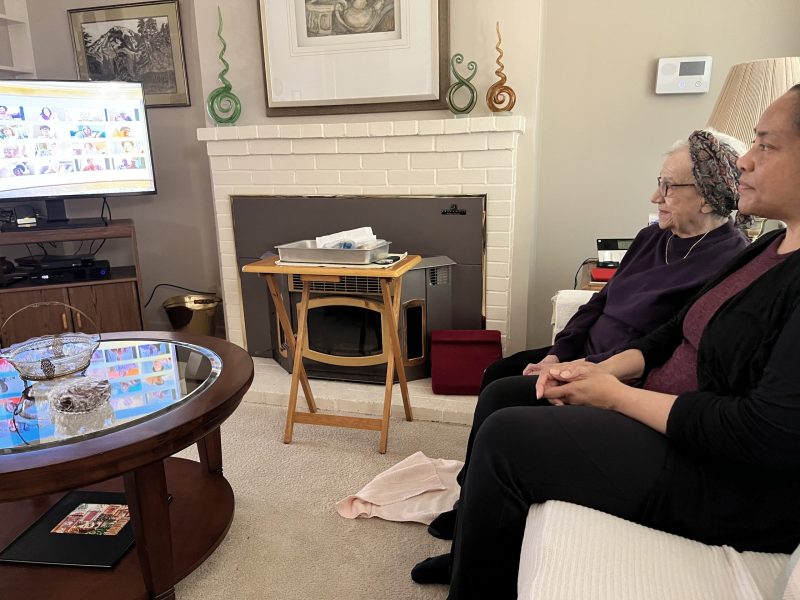
If Dobarganes’ clients are mobile, she might take them out to a museum or restaurant or to go shopping – even hug a tree. “It provides a positive energy exchange,” she said. “First we ask the tree’s permission, then we hug the tree and give thanks.”
Yet, the demands of caring for people in declining physical or cognitive states is just one of the drawbacks that’s creating high turnover and supply that can’t meet demand in the caregiving field.
While home care was the country’s third fastest-growing occupation in 2019, according to the federal Bureau of Labor Statistics, and demand is expected to increase by a third in the next decade, working conditions are still wild west. The pay is low. Caregivers often balance several jobs to make ends meet. Few have benefits like sick leave, vacation or workers compensation.
High in demand, low in wages
Home care workers are still primarily women, 62 percent are people of color, and with a median income of $16,200, they are paid one of the lowest wages in the country, wrote April Verrett in the August 2020 issue of TIME magazine. She is the California president of Local 2015 of the Service Employees International Union, the nation’s largest long-term care union. It has about 25,000 members in San Francisco, the majority of whom serve Medi-Cal clients.
“Put simply, home care will soon be one of the most in-demand and worst-compensated jobs in the U.S.,” she wrote.
Self-employed caregivers earn whatever they negotiate with their employer. Kivalu works as an independent contractor, which she said is much less hassle than working through a caregiving agency. Because of requirements she doesn’t meet, she wouldn’t be able to drive clients to doctors’ appointments or give them medicine or injections, she said. She has her own arrangement with the two women, who found her through a referral from a relative’s caregiver. Kivalu said the majority of caregivers she knows find work through word-of-mouth.
Caregivers serving Medi-Cal clients in San Francisco make a minimum of $19.37 an hour, the wage negotiated by Local 2015, but must have the minimum required state training. Starting salaries for personal care aides hired through private agencies range from $20 to $25 an hour. Certified nursing assistants can earn $25 to $35 an hour. If they sign up on caregiving platforms, the client is charged an added amount but not nearly as much as if they work through private agencies, which can add on as much as 40 percent.
All caregiving agencies, regardless of what they pay, are subject to turnover, as workers seek steady work, benefits and better wages.
“Private agencies and employers compete with hospitals, care facilities and Laguna Honda, which pay more, often offer more generous benefits, and provide more opportunities for advancement,” said Cindy Kauffman, deputy director of Community Services at the city’s Department of Disability and Aging Services (DAS), When she was a social worker at the San Francisco Institute on Aging, she said, “We always had open listings for home-care workers.”
In-Home Supportive Services, the DAS group that serves Medi-Cal clients, employs 23,000 caregivers. That’s “too few for a rapidly aging population without family support and with complex medical needs,” said Director Krista Gaeta.
Simon Pitchford, the recently retired director of Homebridge, an IHSS program that hires caregivers for clients with severe disabilities, said they could have easily placed one-third more than the 300 aides they had. “Caregivers don’t stay in the job.”
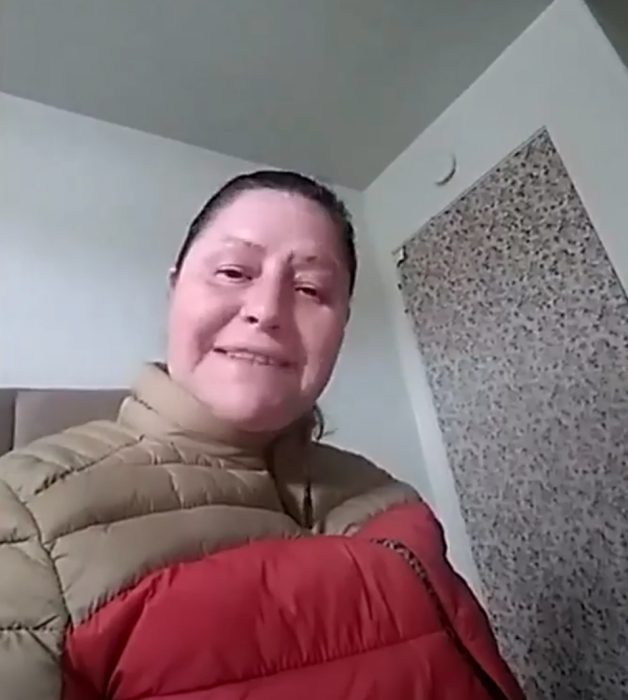
Some small gains
The California Domestic Workers Bill of Rights, adopted in 2013, tracks wages and recognizes the right of domestic workers to have access to affordable health care and retirement benefits. Local 2015, which represents 64,000 caregivers in California, is aiming for a $20 per hour wage.
In February, San Francisco supervisors approved legislation to set up a portable sick leave benefit for people who work in private homes to clean, cook, tend children, garden, do personal organizing, or provide non-medical care for disabled people or seniors. The first of its kind program in the country, it is set to go into effect after within six to 12 months.
But no legislation, state or federal, yet covers health or retirement benefits, civil rights violations, such as sexual harassment or retaliation. Nor have regulations involving meal and rest breaks been applied to caregivers.
Before become a caregiver of older adults, Gulli had spent 10 years raising her children. Beading gave her a creative outlet and a bit of extra income. In 2004, when she was ready to go back to work, customers encouraged sell her jewelry at the San Francisco Towers where many had moved. So, she opened a gift shop there. In between selling and repairing jewelry, Gulli came to know most of the residents. “When some of them began asking me for occasional caregiving,” she said. “I did what I could. I liked them.”
She’s staying at home now, caring for her parents and recuperating from a double mastectomy last summer. But she’s continuing to manage the care team for the 102-year-old blind woman and stays in touch with Aviva. “Their help is immeasurable.”
The magnetism of helping
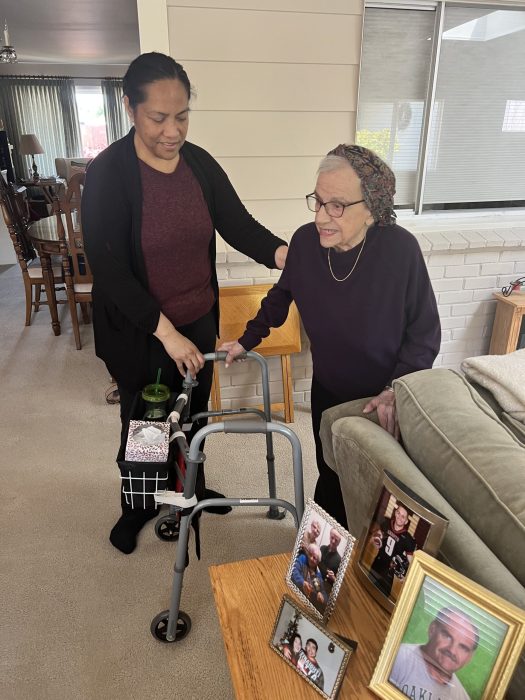
Kivalu, a native of Tonga who once had jobs in accounting and administration, gravitated to home care 12 years ago. In college, she had enjoyed tagging along after classes to help her mother, a visiting nurse, with cooking, housekeeping and lifting clients.
She worked in accounting for EBay and Butterfield & Butterfield Auctioneers before she took an administrative job with Carelinx, a caregiving platform in San Bruno. Within two years, she became a caregiver for the agency and did that for another 12 years.
She lost work during the pandemic when clients discovered she had children in school, before it became clear children were not more contagious and before education went virtual. Still, she had high marks for the agency, and the work. It helped her, a married mother of four, grow, she said. “I learned a lot about myself – to be patient, take my time and focus on what I’m doing. It’s very rewarding.”
Kivalu has typically found work through Carelinx or word-of-mouth. Kivalu was referred to Giazza by a caregiver who had worked for Sagasty’s uncle. If she were to be employed through an agency, she said, she would not, for liability reasons despite her training, be allowed to drive her client anywhere or administer medicine. Those services often cost the client extra.
Dobarganes prides herself on the personal touch she added to her caregiving assignments. Besides fixing meals, bathing and toileting clients or taking their blood pressure or sugar levels, administering medicine or even physical therapy, she might engage them in a salsa dance. “It helps keep them moving and also helps with balance, strength and breathing.”
Caregiving was what she fell into after moving from Mexico City at age 22.
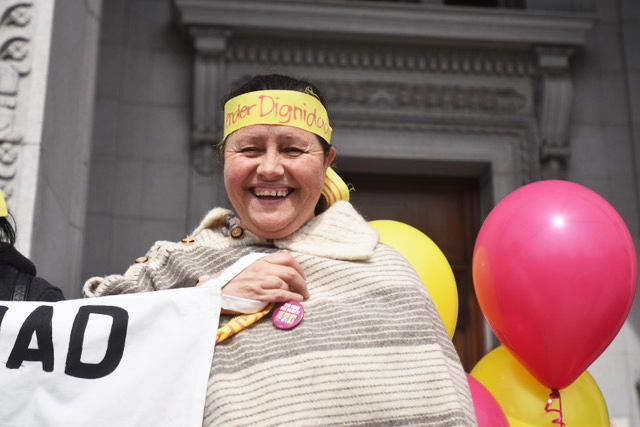
But the pandemic impacted her as well. Working through La ColectiVA, a social justice and equity collective for domestic workers, she had 15 clients in early 2020. By the end of the first lockdown, she had lost them all. Today, she spends more of her time doing advocacy work with La ColectiVA, and Hand in Hand, network of employers of nannies, housecleaners and home attendants.
“La ColectiVA helped me find work and taught me about workers’ rights,” she said. “We want to unite with other domestic workers to demand justice” and be recognized as essential workers.
Editor’s Note: Credit goes to Pilar Mejia for her translation services.
Next in the Series:
Tuesday, May 10: Family members make up majority of in-home caregivers due to help’s high cost, taking on all-consuming, sometimes overwhelming role. The high cost of in-home caregiving has led many families to take on the burden themselves. In fact, the vast majority of caregivers serving Medi-Cal clients in San Francisco – hired through the city’s In-Home Supportive Services program – are family members. While most become members of the caregivers union and make slightly more than minimum wage, it is still an all-consuming, physically exhausting and sometimes maddening job.
FIND A CAREGIVER:
In-home caregiving: The San Francisco Department of Disability and Aging Services In-Home Supportive Services program makes referrals to city caregiving services as well private providers on their referral list. It also offers support in signing up. Call 415-355-6700 or check its online Benefits and Resources Hub.
Emergency caregiving: The San Francisco In-Home Supportive Services Public Authority offers emergency on-call caregiver referrals to clients who don't have a regular caregiver, whose regular caregiver canceled on short notice, or were discharged from a hospital or skilled nursing facility on short notice without a regular caregiver in place. Call 415-558-4700.
Nonprofit organizations: The Institute on Aging, the Jewish Family and Children's Services, and Self-Help for the Elderly are among those offering in-home care and support services.
Private agencies: You can search "caregiver agency san francisco" on Yelp to find agencies near you, along with customer reviews. You also can check agencies out individually on the San Francisco Better Business Bureau website.
Social workers in hospitals and senior residences and skilled nursing facilities can be of great help in identifying resources.



